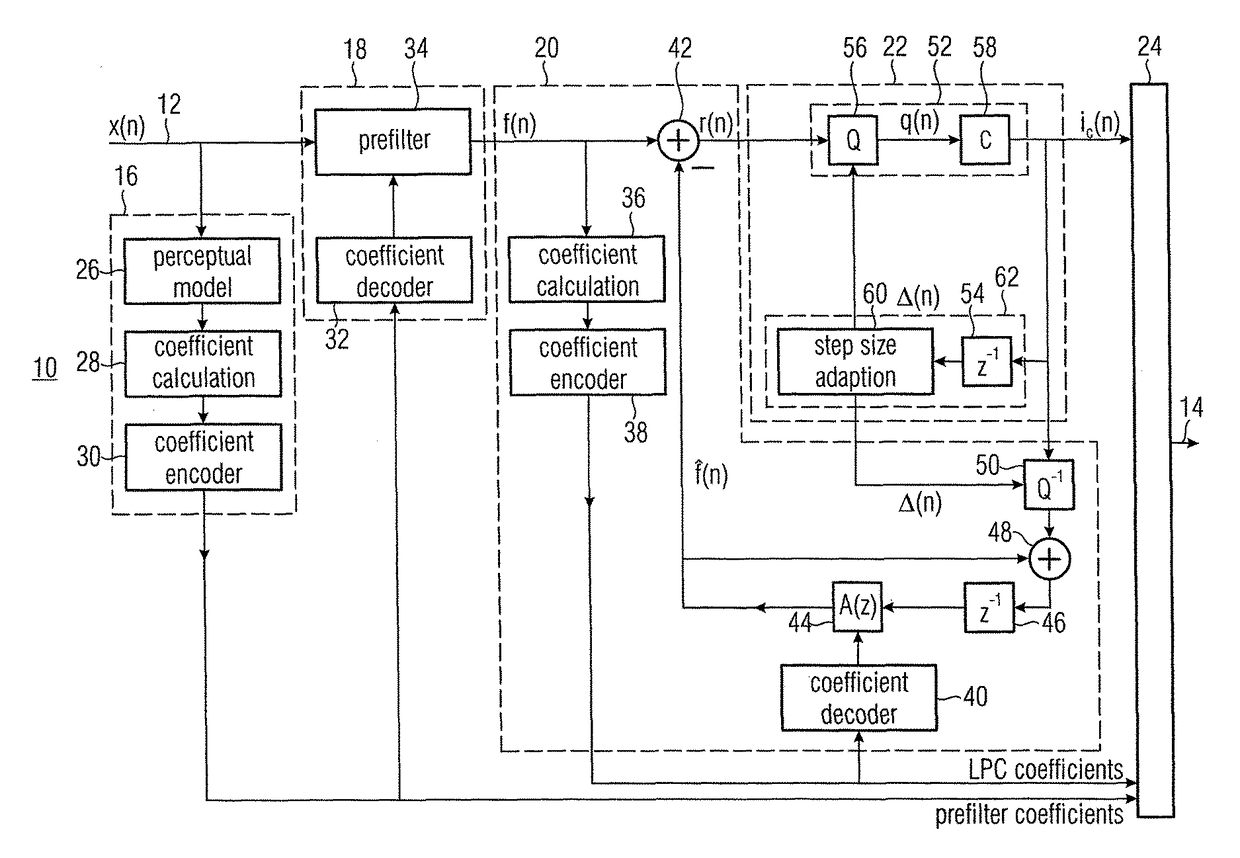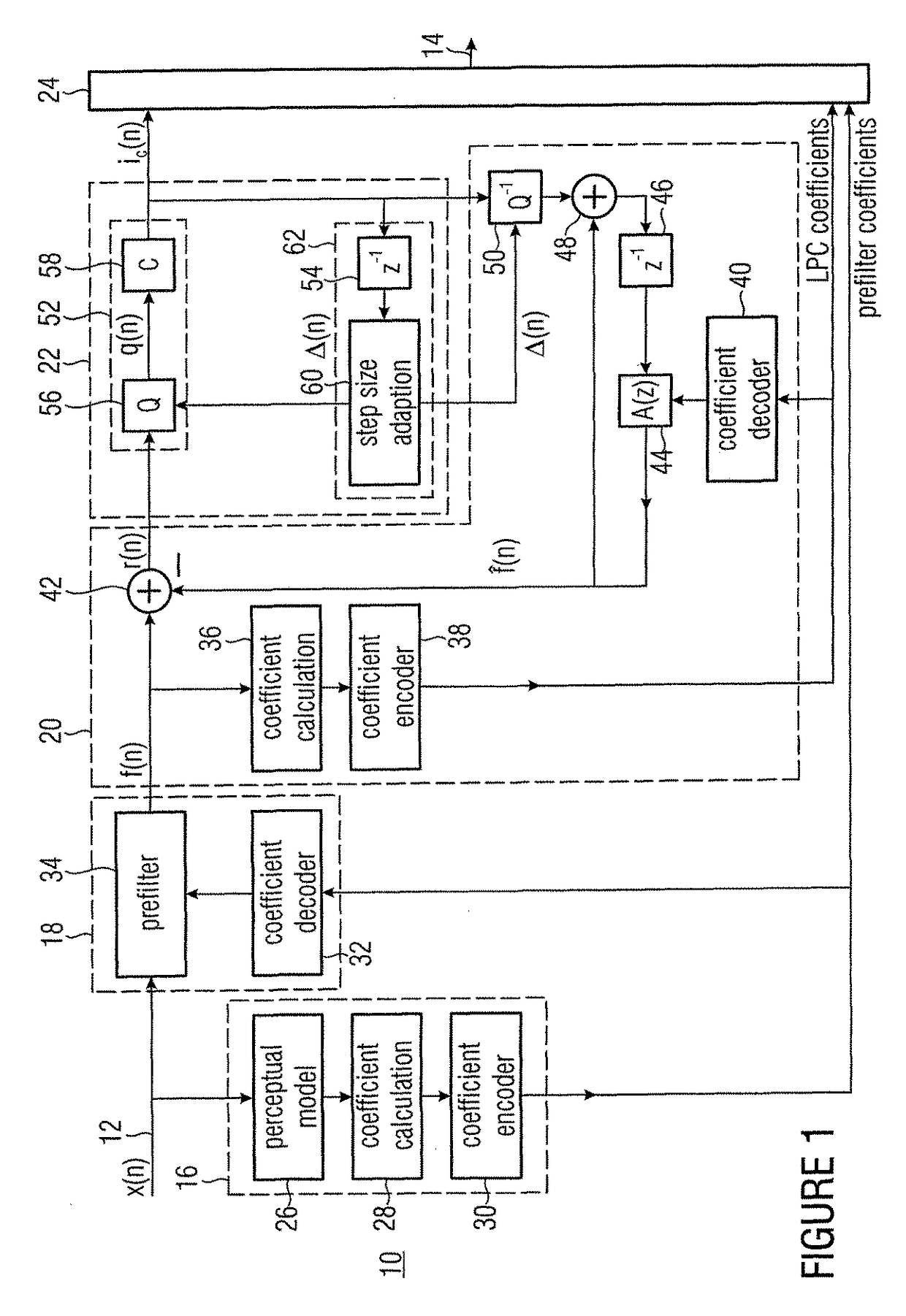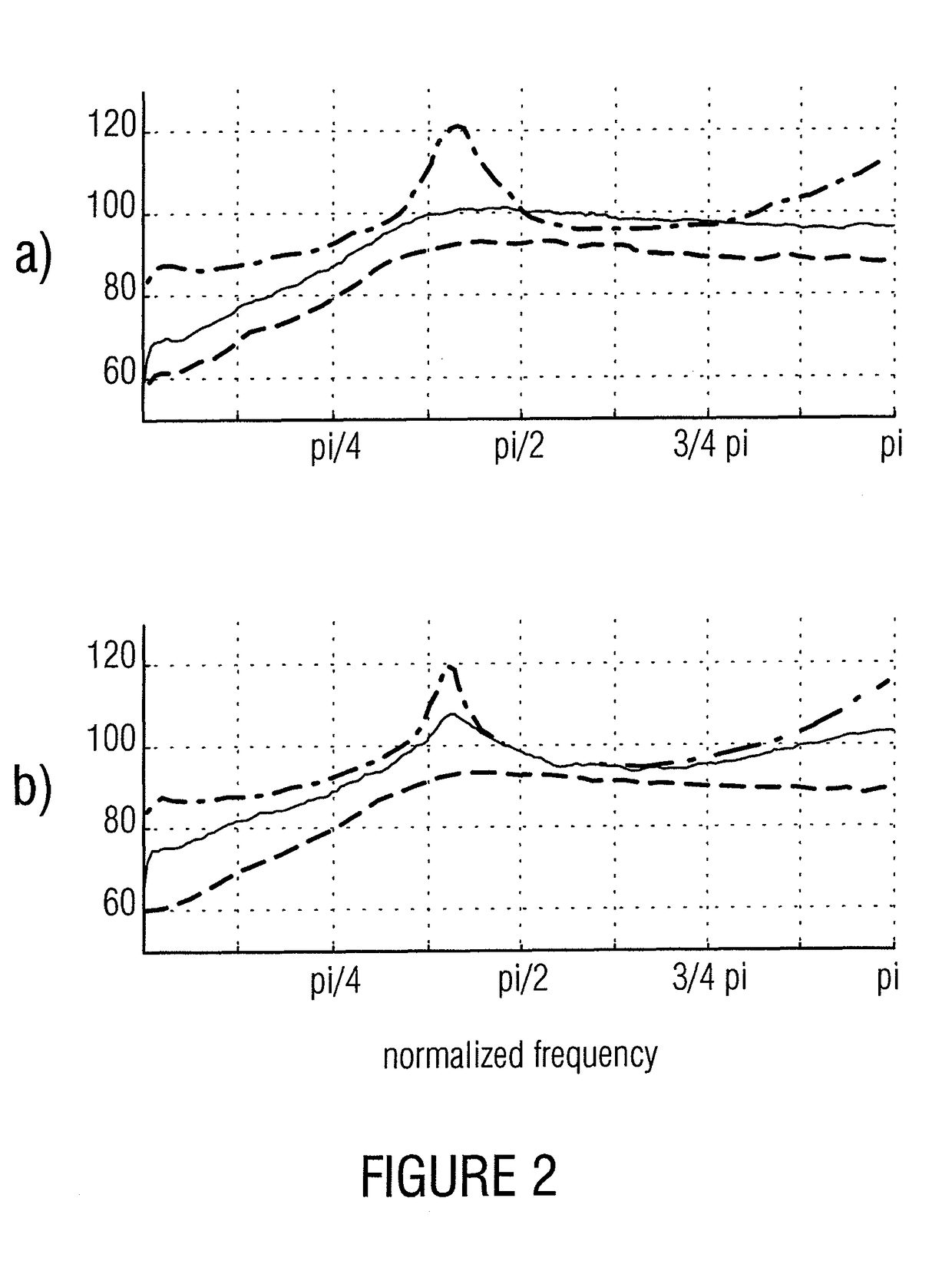Information signal encoding using a forward-adaptive prediction and a backwards-adaptive quantization
a technology of information signal and quantization, applied in speech analysis, color television, television systems, etc., can solve the problems of merely limited audio quality, additional limiting factor bit rate, and description of encoders, so as to improve listening quality, reduce quality loss, and reduce the effect of prediction coefficien
- Summary
- Abstract
- Description
- Claims
- Application Information
AI Technical Summary
Benefits of technology
Problems solved by technology
Method used
Image
Examples
Embodiment Construction
[0028]Before embodiments of the present invention will be discussed in more detail with reference to the drawings, first, for a better understanding of the advantages and principles of these embodiments, a possible implementation of an ULD-type encoding scheme will be discussed as comparative example, based on which the essential advantages and considerations underlying the subsequent embodiments, which have finally led to these embodiments, can be illustrated more clearly.
[0029]As has already been described in the introduction of the description, there is a need for an ULD version for lower bit rates of, for example, 64 k Bit / s, with comparable perceptual quality, as well as simpler scheme for obtaining a constant bit rate, particularly for intended lower bit rates. Additionally, it would be advantageous when the recovery time after a transmission error would remain low or at a minimum.
[0030]For redundancy reduction of the psychoacoustically preprocessed signal, the comparison ULD ...
PUM
 Login to View More
Login to View More Abstract
Description
Claims
Application Information
 Login to View More
Login to View More - R&D
- Intellectual Property
- Life Sciences
- Materials
- Tech Scout
- Unparalleled Data Quality
- Higher Quality Content
- 60% Fewer Hallucinations
Browse by: Latest US Patents, China's latest patents, Technical Efficacy Thesaurus, Application Domain, Technology Topic, Popular Technical Reports.
© 2025 PatSnap. All rights reserved.Legal|Privacy policy|Modern Slavery Act Transparency Statement|Sitemap|About US| Contact US: help@patsnap.com



